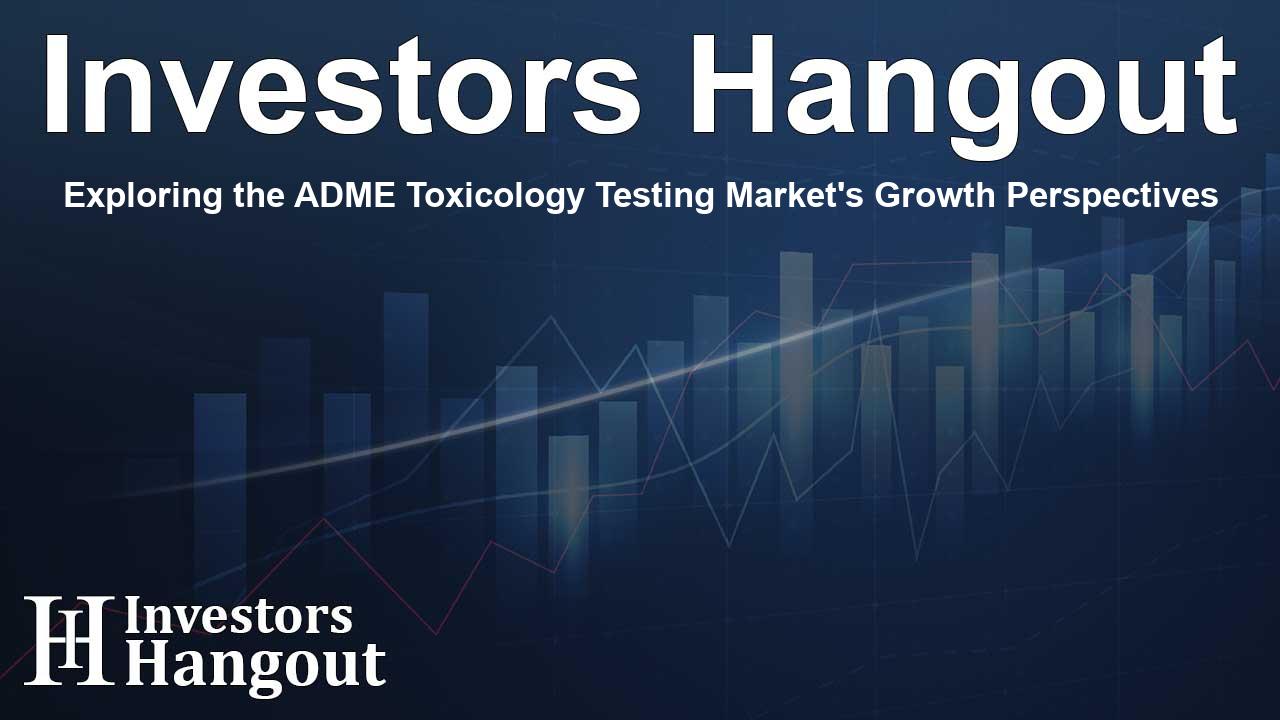Exploring the ADME Toxicology Testing Market's Growth Perspectives

Overview of ADME Toxicology Testing Market Dynamics
ADME toxicology testing is a fundamental aspect of drug discovery, greatly impacting how new medicines are developed and brought to market. The market is witnessing significant expansion, with estimates indicating an increase from USD 6.64 billion to an impressive USD 14.40 billion by 2033. This growth reflects a compound annual growth rate (CAGR) of approximately 10.17% during the forecast years.
Key Growth Factors in ADME Toxicology Testing
One of the primary drivers behind this growth is the increasing focus on drug discovery and the outsourcing of testing activities to contract research organizations (CROs). As pharmaceutical companies look to streamline their research and development processes, they increasingly turn to CROs for specialized services. This shift not only reduces time-to-market but also allows for cost savings, which are essential in an industry where funding and resources can be limited.
Technological Advancements
The shift from traditional in vivo tests to advanced in vitro and in silico testing platforms has become more pronounced in recent years. Enhanced predictive capabilities and faster results are making these modern techniques favorable in preclinical assessments. In particular, the rise of Artificial Intelligence (AI) in predictive toxicology is revolutionizing how researchers evaluate drug safety, improving both accuracy and efficiency in drug development.
Regional Insights and Market Shares
The ADME toxicology testing market is primarily driven by regions such as North America, which holds a substantial market share due to its strong pharmaceutical industry and robust R&D investments. Moreover, the U.S. ADME toxicology testing market is projected to see a significant increase from a valuation of USD 2.18 billion to over USD 4.69 billion by 2033.
Emerging Markets
Meanwhile, the Asia-Pacific region is rapidly emerging as a hotspot for ADME testing, largely due to cost-effective testing solutions available in countries like China and India. The expansion of biotechnology infrastructure and the increasing number of biologics pipelines are further propelling this market segment. The regional growth rates are expected to reflect a promising CAGR of approximately 11.10% in the coming years.
Market Drivers and Challenges
Several factors are significantly driving the ADME toxicology testing market. The discovery of new molecular entities (NMEs), along with advanced gene therapies, creates a continuous demand for preclinical ADME/Tox studies. As the pharmaceutical landscape evolves, a parallel rise in concerns related to drug safety further fuels the demand for toxicology testing.
Major Industry Players
Prominent companies in the ADME toxicology testing market include Charles River Laboratories, Covance Inc. (LabCorp), WuXi AppTec, Thermo Fisher Scientific Inc., BioIVT, and others. These key players are increasingly adopting innovative strategies to enhance their service offerings, leading to improved customer satisfaction and expanded market share.
Future Outlook
Looking ahead, the forecast for the ADME toxicology testing market remains optimistic. As pharmaceutical and biotechnology companies continue to invest heavily in drug discovery, the demand for reliable and efficient testing solutions is expected to grow. Additionally, advancements in technology, including automation, AI, and machine learning, will likely enhance testing processes further, making them quicker and more cost-effective.
Conclusion
In summary, the ADME toxicology testing market stands at a pivotal point in its growth journey, driven by technological advancements and increasing outsourcing trends that reshape the landscape of drug development. With a projected market size of USD 14.40 billion by 2033, industry stakeholders must remain innovative and agile to keep pace with the evolving needs of drug discovery and regulatory compliance.
Frequently Asked Questions
What is ADME toxicology testing?
ADME toxicology testing evaluates a drug's absorption, distribution, metabolism, and excretion properties, along with its associated toxicity aspects.
Why is the ADME toxicology testing market growing?
The market growth is driven by increasing drug discovery activities, outsourcing to CROs, and advancements in testing technologies.
Which regions are leading in ADME toxicology testing?
North America dominates the market, while the Asia-Pacific region is the fastest-growing area due to cost-effective testing and expanding biotech infrastructures.
What are the key players in the ADME toxicology testing market?
Major players include Charles River Laboratories, Covance Inc. (LabCorp), WuXi AppTec, and Thermo Fisher Scientific Inc., among others.
What technology trends are influencing the market?
Advancements in in vitro and in silico testing methods, as well as the integration of AI in predictive toxicology, are significant trends reshaping the market.
About The Author
Contact Ryan Hughes privately here. Or send an email with ATTN: Ryan Hughes as the subject to contact@investorshangout.com.
About Investors Hangout
Investors Hangout is a leading online stock forum for financial discussion and learning, offering a wide range of free tools and resources. It draws in traders of all levels, who exchange market knowledge, investigate trading tactics, and keep an eye on industry developments in real time. Featuring financial articles, stock message boards, quotes, charts, company profiles, and live news updates. Through cooperative learning and a wealth of informational resources, it helps users from novices creating their first portfolios to experts honing their techniques. Join Investors Hangout today: https://investorshangout.com/
The content of this article is based on factual, publicly available information and does not represent legal, financial, or investment advice. Investors Hangout does not offer financial advice, and the author is not a licensed financial advisor. Consult a qualified advisor before making any financial or investment decisions based on this article. This article should not be considered advice to purchase, sell, or hold any securities or other investments. If any of the material provided here is inaccurate, please contact us for corrections.
